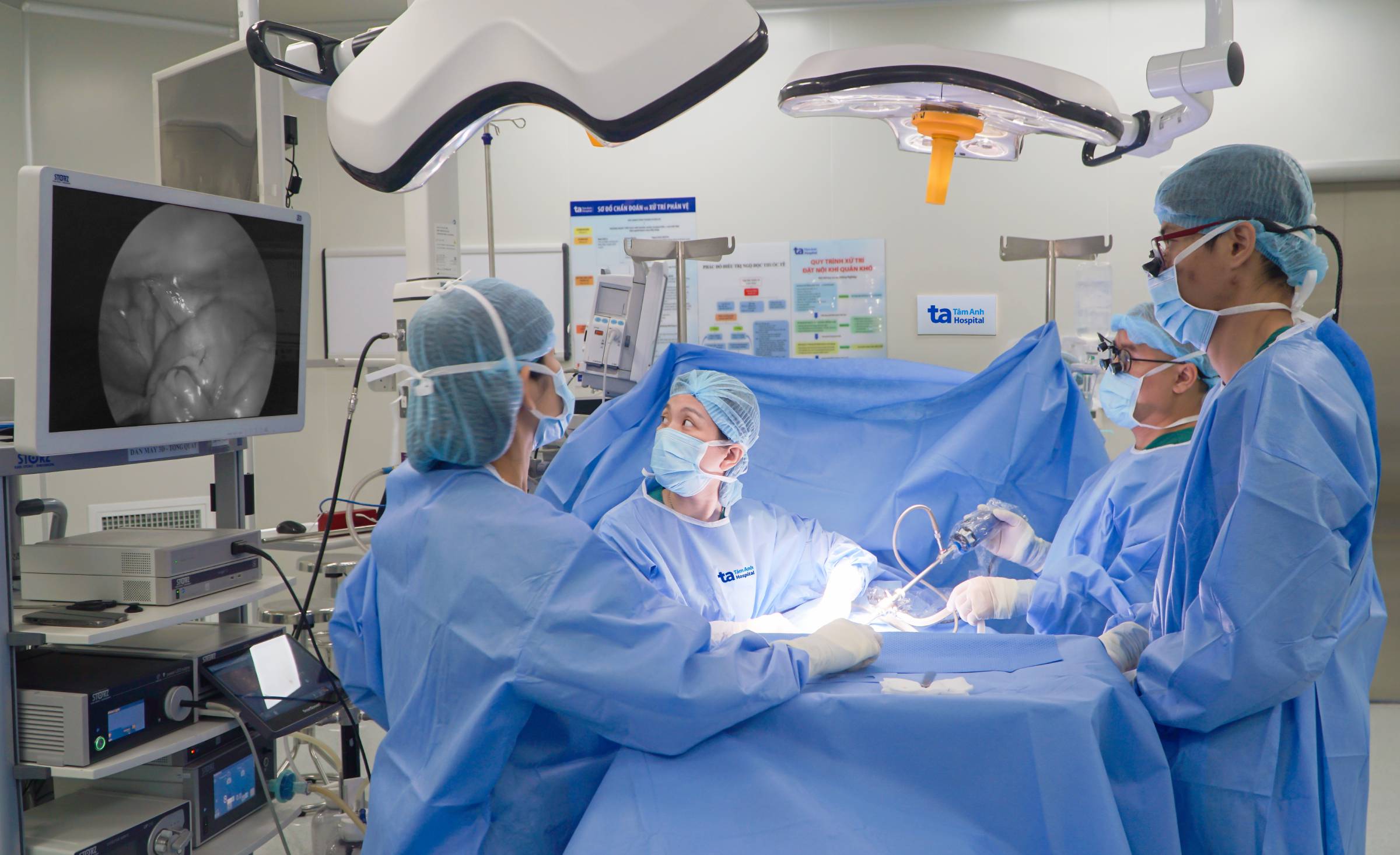Dr. Nguyen Do Trong, from the Pediatric Surgery Department of Tam Anh General Hospital in Ho Chi Minh City, reported that a CT scan revealed a 3x4 cm double esophageal cyst located in the boy's abdomen, near the entrance to the stomach, causing digestive symptoms.
The boy's prolonged loss of appetite and subsequent weight loss indicated that the cyst was impacting his digestive function and nutrient absorption. The large cyst obstructed the passage of food into the stomach, leading to abdominal distension. Without surgical intervention, the cyst would continue to grow, potentially causing complete blockage and complications such as bleeding, infection, or abdominal perforation.
Doctors injected CO2 gas into the boy's abdomen to expand the surgical field. Then, using a camera, they located and carefully removed the cyst from the esophageal wall without damaging surrounding organs. The biopsy confirmed the cyst was benign, and the boy was discharged 3 days after the surgery.
 |
The pediatric surgical team operating on the patient. Photo: Tam Anh General Hospital |
The pediatric surgical team operating on the patient. Photo: Tam Anh General Hospital
Double esophageal cysts are a congenital anomaly, occurring in approximately 1 in 8,200 children, with boys being twice as likely to be affected as girls. The condition arises when a pouch-like or tubular structure (cyst) forms and attaches to the esophagus. The cause is typically attributed to abnormal embryonic development between the 4th and 8th weeks of gestation. During this period, as the foregut is forming the esophagus and trachea, an abnormal split can occur, creating an extra structure, the double cyst.
Larger cysts can press on adjacent organs, causing a variety of symptoms. Pressure on the esophagus can lead to difficulty swallowing, vomiting, slow growth, and weight loss. If the cyst compresses the airway, it can cause difficulty breathing, wheezing, persistent coughing with no apparent cause, and recurring pneumonia. Some individuals may experience chest or upper abdominal pain, a feeling of a lump in the chest or neck, and other symptoms.
Most cases of double esophageal cysts in children are asymptomatic and discovered incidentally during routine checkups or imaging tests such as X-rays, CT scans, MRI scans, or endoscopic ultrasounds. Dr. Trong recommends that parents seek medical attention for their children if they exhibit any suspicious symptoms. The most effective treatment is surgical removal of the entire cyst to alleviate symptoms and prevent complications.
Dinh Lam
*The patient's name has been changed.
| Readers can submit questions about children's health here for doctors to answer. |












